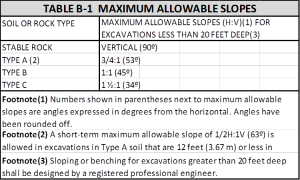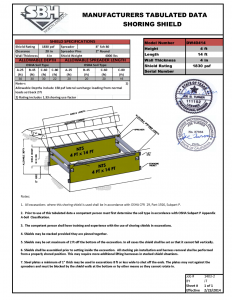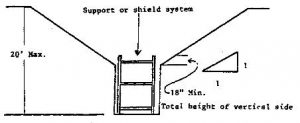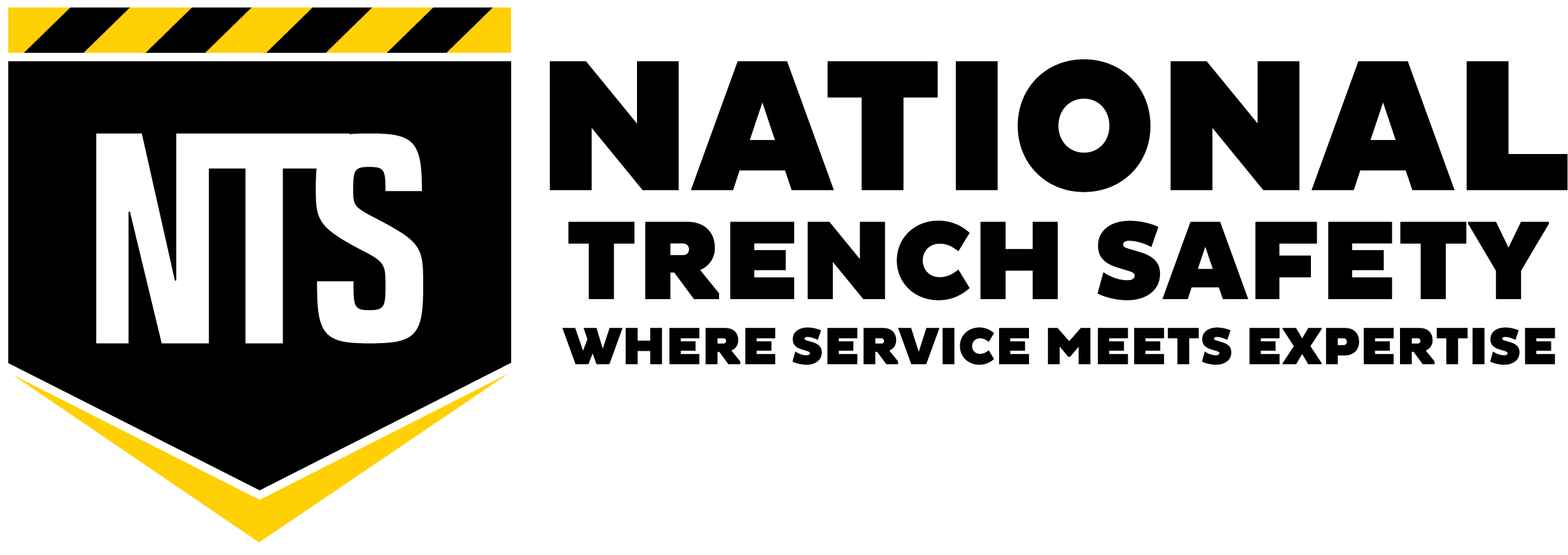One of the more interesting questions I receive from contractors well versed in both the excavation standard and manufacturer’s tabulated data regards the application of OSHA’s 20-ft depth requirement for site-specific engineering. Quite often I hear the statement “Anything over 20 feet deep must be designed by a registered engineer.” There is a lot of confusion within the industry about what must specifically happen when shoring equipment reaches a 20-ft depth, which we’ll talk through in this article.
First, any piece of shoring equipment inherently has a structural capacity. The manufacturer’s tabulated data translates that structural capacity into usable, quantifiable information for the end-user, which typically includes Allowable Pounds Per Square Foot (PSF) Rating. This structural rating differs from the safe working loads commonly associated with slings, chains, lift bars, and related rigging equipment. In addition, to PSF ratings the tabulated data typically establishes allowable depth ratings for OSHA Type A, B, C-60, and C-80 soils. These soil ratings allow the Competent Person to select and use the shoring system under OSHA Option 2 – Designs using the manufacturer’s tabulated data. The tabulated data almost always allow depths over 20 feet deep in some of the soil types, although this is strictly dependent upon the structural properties of the equipment. The tab data would be applicable in all cases where the surface of the excavation is not sloped and can be used without the need for a site-specific plan (provided the manufacturer’s tabulated data has a registered professional engineer’s stamp). Very simply, if a piece of tabulated data states that a protective system can be used at a 30-ft depth, then that system may be selected and used at that depth provided there is no sloping or benching as we’ll discuss below.
As alluded to above, confusion comes when there is sloping at the surface. Table  B-1 provides a representation of the OSHA 29 CFR 1926 Subpart P Appendix B Sloping and Benching table. Footnote (3) states that excavations greater than 20-ft in depth must be engineered. Appendix B Sloping and Benching are essentially OSHA’s tabulated data for open-cut trenching and all provisions of the data must be adhered to. If a trench shield is used inside a sloped excavation the 20-ft rule still applies.
B-1 provides a representation of the OSHA 29 CFR 1926 Subpart P Appendix B Sloping and Benching table. Footnote (3) states that excavations greater than 20-ft in depth must be engineered. Appendix B Sloping and Benching are essentially OSHA’s tabulated data for open-cut trenching and all provisions of the data must be adhered to. If a trench shield is used inside a sloped excavation the 20-ft rule still applies.
An interesting element comes into play when looking at the manufacturer’s tabulated data.  In the representative tabulated data shown, the first note states that excavations shall be in accordance with OSHA requirements. What this means, among other things, is that Appendix B and its restrictions when using sloping are applicable when using this specific piece of equipment at 20 ft and greater total depths.
In the representative tabulated data shown, the first note states that excavations shall be in accordance with OSHA requirements. What this means, among other things, is that Appendix B and its restrictions when using sloping are applicable when using this specific piece of equipment at 20 ft and greater total depths.
While the attached tabulated data probably represent the vast majority of tabulated data in existence, there is an alternative to the need for a written site-specific plan for a sloped excavation. Suppose the manufacturer’s tabulated data has a sloping table and the tabulated data also tells the contractor what slope to use with different OSHA soil types and does not refer to Appendix B. In that case, site-specific engineering may not be required. In this case, the manufacturer of the shoring is not only responsible for the shoring, they are also responsible for the excavation sloping and benching. An important note here is that while tabulated data governs the use of equipment, the contractor’s Competent Person also has a responsibility to review the site and to ensure that it is safe for workers.
There is one additional related topic that is sometimes a point of confusion when dealing with slops and benching that relates to the height of the trench shield in relation to grade. If a piece of shoring or shielding equipment is used in conjunction with sloping and benching, it is an OSHA requirement that the shoring must be held 18-in above the slope cut (the diagram to the right provides a general representation). In the case where the shoring or shielding equipment is used with level surfaces (no sloping or benching), the top of the shoring can be level at the surface with no extension above the surface.
to grade. If a piece of shoring or shielding equipment is used in conjunction with sloping and benching, it is an OSHA requirement that the shoring must be held 18-in above the slope cut (the diagram to the right provides a general representation). In the case where the shoring or shielding equipment is used with level surfaces (no sloping or benching), the top of the shoring can be level at the surface with no extension above the surface.





